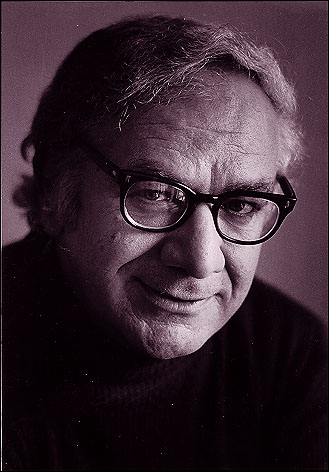Ferris Chorale’s salute to Dominick Argento offers an evening of vocal delights

The William Ferris Chorale has a long history with music of Dominick Argento, and in fact, hosted a week of programs and events associated with his 60th birthday back in 1987, which the American composer himself attended.
Thus it was wonderful to see the Chorale, conducted by music director Paul French, offering a complete program of Argento’s music Saturday night at Loyola University’s Madonna della Strada Chapel. The evening was a welcome salute to a composer who hasn’t been represented in such a major way locally since the Lyric Opera presented his Voyage of Edgar Allan Poe twenty years ago.
Argento’s Six Elizabethan Songs is an early song cycle (1958) that became so popular he later arranged a chamber music version. Soprano Lisa Rogers Lee accompanied by Thomas Weisflog on the piano from the upper back choir loft presented a blustery version of Spring — the most popular song of the cycle — preceded by the tranquil yet anxiety-laden Sleep.
Choral arrangements of black spirituals often have an antiseptic quality to them. Argento’s Spirituals and Swedish Chorales (1997) avoids doing so by juxtaposing the spirituals with more formal and restrained Swedish chorales. The composer also provides tangy harmonies and unexpected bits of syncopation that give the selections an offbeat Euro-edge.
I Hate and I Love from 1982 was the undiscovered gem of the evening — a choral song cycle accompanied only by scattered and evocative percussion made up of six settings of the Roman poet Catullus that express his intense and contrasting emotions for his love Clodia.
Catullus’ poetry affords Argento an opportunity for harmonic text painting emphasizing consonance to portray love and dissonance to portray hate. Choral tone color and dynamics were also subtly used along with exquisite diction to get across this immensely illuminating and eternally relevant ancient take on the battle of the sexes.
Argento’s sense of humor was also very much in evidence in the most recent work on the program, The Choirmaster’s Burial. This 2009 four-part choral setting depicts a priest wanting to hurry along the burial ceremony for the deceased choir director, though the choir itself has other, far more raucous ideas.
Not every work on the program showed Argento at his best. A solo organ work virtuosically rendered by Thomas Weisflog, Prelude for Easter Dawning, portrayed the Resurrection in a rather literal and violent almost Cecil B. DeMille manner and had little of the subtlety, humor or nuance of much of Argento’s vocal or choral music.
Likewise, 1994’s To God, which evokes the Apocalypse with a cappella singing punctuated by the Last Trumpet — ineffectively supplied by organ — came off in a rather banal manner.
By contrast, The Vision (2000), which attempts to portray the Transfiguration via a section of Dante’s Divine Comedy, musically portrays that theophany with a majesterial sense of awe achieved via heightened chromaticism and dynamic contrast.
Posted in Performances


